Natural Food Colors: Vibrant and Healthy Options
People have recently shown a strong interest in natural and sustainable products, especially in the food and beverage industry. One trend gaining attention is using natural food colourings made from fruits, flowers, and plants.
Early colourings came from natural sources like plants and minerals. However, with industrialisation, artificial dyes became popular because they were cheaper, brighter, and more stable during processing. Today, synthetic colours such as tartrazine and allura red are commonly used in candies, drinks, and processed foods. Despite their advantages, these dyes have been linked to health problems, including allergies and behavioural issues in children. Some countries have even banned certain artificial dyes.
On the other hand, natural food colourings are derived from fruits, vegetables, flowers, and spices. They are considered safer and often have added health benefits. For example, in Malaysia, bunga telang provides a natural blue pigment for drinks and desserts. At the same time, turmeric and pandan leaves are used in traditional dishes for their vibrant yellow and green hues. Red pigments can be sourced from Jenjarum, roselle, and red beet. While natural dyes are healthier, they face challenges like fading under heat or light and higher production costs. Innovative ideas like exploring more stable colouring sources, e.g. Jenjarum, aim to overcome these limitations.
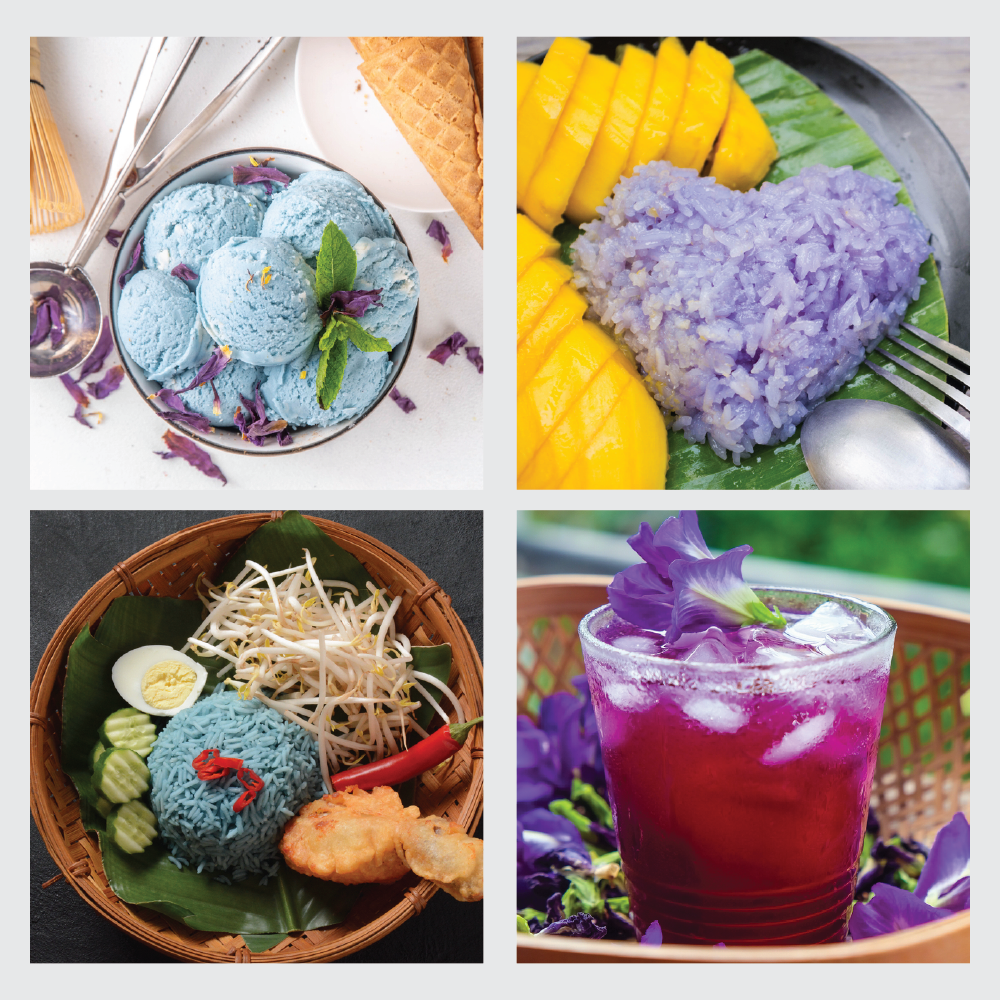
What Is Natural Food Coloring?
Natural food coloring is a type of color additive made from natural sources like plants or minerals. Unlike synthetic dyes, which are created using chemical compounds, natural food coloring is derived from things like beet juice for red, turmeric for yellow, spirulina for blue-green, or carrot juice for orange. These colorings are often used to enhance the appearance of food while keeping it free from artificial ingredients.
YANGGEBIOTECH manufacturer Natural Food Coloring Powder: beta-carotene, blue spirulina powder,copper chlorophyll sodium salt, butterfly pea pollen source plant roots, stems, leaves, flowers, fruits, used in products, beverages, wine, cakes, candy, medicine, etc. we offer free samples 10 -30g, to add this branded ingredient to your final product, please email: info@yanggebiotech.com
Types of Natural Food Coloring
If you're looking for a food coloring substitute that's free of mysterious ingredients and chemicals, try using these natural food dyes to create every color of the rainbow. From natural pink coloring to deep purple hues, the colors created by these powders can rival the results of traditional food coloring. The best part is that you might already have some of these powders in your products!
1. Beetroot Powder:
Made from red beets, beetroot powder can add an intense red hue to your dishes. It's a great option for creating natural red food coloring in a range of sweet and savory dishes, from baked goods to beverages. Add a teaspoon of beetroot powder to cake or cookie batter to give it a pink or red tint. Or try mixing a pinch of beetroot powder into icing or frosting to create a visually appealing treat. Keep in mind that a little goes a long way with beetroot powder, both in color and flavor. It can impart an earthy flavor to your dishes if you use too much.
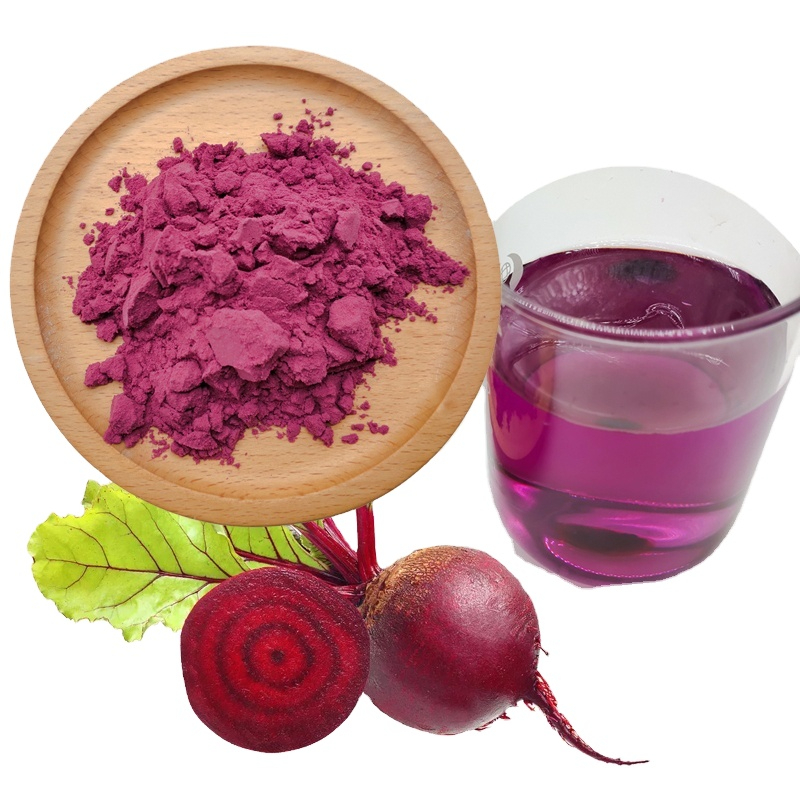
2. Turmeric Powder:
Turmeric powder is a popular choice for natural yellow food coloring because of its intense hue. Unlike artificial food dyes, which can often contain harmful chemicals and additives, turmeric is a safe and natural alternative. Plus, it's readily available and affordable, making it a convenient option for both home cooks and commercial kitchens.
Turmeric can be used to give a golden yellow tint to cakes, cookies, and even ice cream. Transform a plain white sauce into a vibrant yellow one or make a golden latte by combining turmeric with milk, honey, and a sprinkle of cinnamon. Start with a small amount of turmeric to create a natural yellow shade and then adjust to your desired color intensity.

3. Spirulina Powder:
Spirulina powder is a natural food coloring derived from blue-green algae. Packed with essential nutrients like protein, vitamins, and minerals, it offers numerous advantages as a natural food coloring option. Not only does spirulina powder provide appealing shades of green and blue, but it also adds a nutritional boost to your products. Whether you're looking to enhance the visual appeal of baked goods, beverages, or even savory dishes, spirulina powder is a versatile and healthy alternative to artificial food coloring.
In addition to its nutritional benefits and natural color, spirulina powder is also versatile and easy to use. It can be mixed into various recipes without altering the taste significantly, making it an excellent choice for those who want to add color without compromising the flavor profile of their dishes.
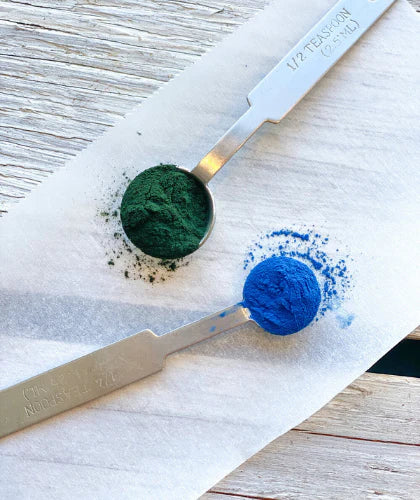
4. Matcha Powder:
Matcha powder is a green powder made from finely ground green tea leaves. An easy way to use this natural green food coloring is in your baked goods. By adding a teaspoon or two of matcha powder to cookie or cake batter, you can achieve a beautiful green color without the need for artificial food dyes. Not only does this add a pop of color to your treats, but it also adds a subtle earthy flavor that pairs well with sweet desserts.
Another way to use matcha powder as a natural food coloring is in beverages. Whether you're making a smoothie, latte, or cocktail, a small amount of matcha powder can give your drink a colorful green hue.

5. Pitaya Powder:
Pitaya powder, also known as dragon fruit powder, is derived from the bright pink or red flesh of the dragon fruit, a tropical cactus fruit. The fruit itself is not only visually appealing but also packed with essential nutrients. Pitaya powder is made by freeze-drying the fruit and grinding it into a fine powder. This process helps retain the fruit's natural color and preserves its nutritional value.
One of the main advantages of using pitaya powder as a natural pink food coloring is its intense and eye-catching color. The powder produces a pink or magenta shade, perfect for adding a pop of color to your baked goods, beverages, desserts, and more. Whether you're making macarons, smoothie bowls, or frosting, pitaya powder is sure to elevate the visual appeal of your creations.

6. Butterfly Pea Flower:
Butterfly pea powder is a natural blue food coloring derived from the flowers of the butterfly pea plant. This unique powder adds a beautiful and eye-catching color to beverages, and it's also free from artificial additives and preservatives. A unique feature of this powder is that it changes color from blue to purple when it comes into contact with acidic ingredients. Try making a color-changing mocktail by adding a squeeze of lemon juice and watch the blue color of the butterfly pea powder change to a brilliant violet. With its versatility and natural appeal, butterfly pea powder is a fantastic choice for those looking to enhance their culinary creations with a touch of natural beauty.
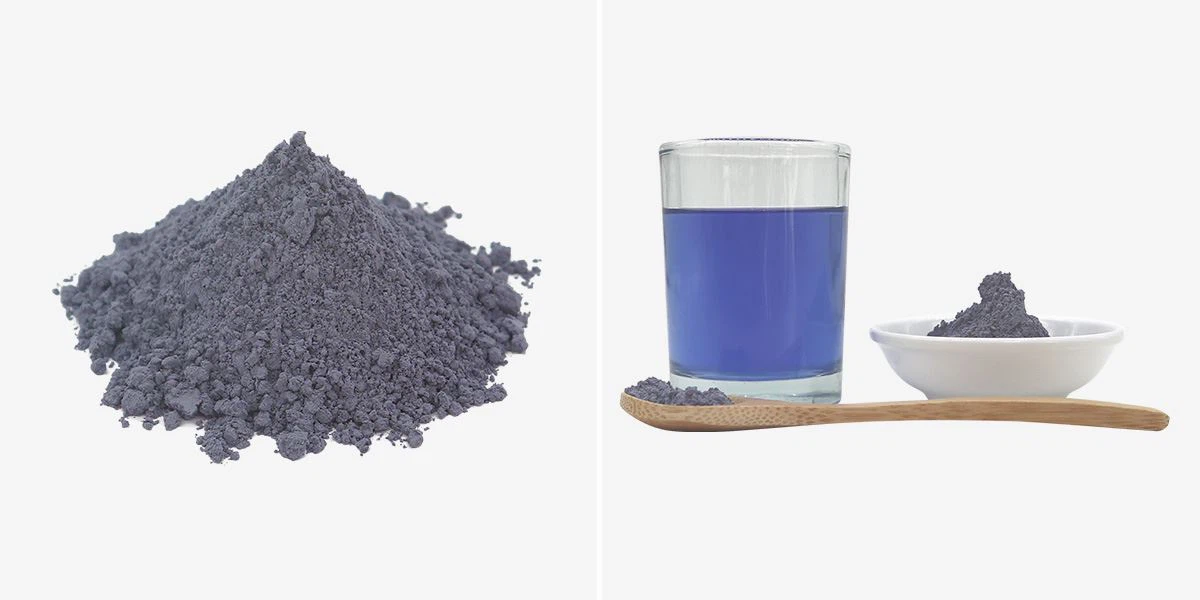
Health Benefits Of Naturally Derived Food Colors
Increasingly, the trend of natural colors is expanding due to their many proposed health effects beyond that of basic human nutrition. Here are some examples:
Anthocyanin-Based Colors (Reds to Purples and Blues) = improve cardiovascular strength and decrease cholesterol
Carotenoid-Based Colors (Yellows and Oranges) = offset age-related macular degeneration
Tumeric-Based Colors (Yellows) = prevents cognitive decline
With a variety of natural color options accessible on the market, one must be knowledgeable of both their chemical properties that influence the ability to replace synthetics as well as their health-promoting properties, which may have a lasting effect on consumers.

Advantages of Natural Food Colouring
Natural food colourings offer several benefits, making them a better alternative to synthetic dyes. They are safer as they are derived from plants, seeds, flowers, and minerals without harmful chemicals. Natural dyes are also less likely to cause allergic reactions, making them suitable for people with dietary restrictions. Furthermore, they are environmentally friendly because they come from renewable sources and do not harm ecosystems. In China, these natural pigments enhance the authenticity of traditional dishes while meeting the demand for clean-label products.

Importance of Natural Food Colorants
Natural food colorants are essential for several reasons, including:
Health Benefits: Natural colors have a variety of health benefits, including antioxidant, anti-cancer, and anti-inflammatory properties
Masking Unpleasant Attributes: Food colorants are paramount in food production as they serve the critical function of concealing undesirable attributes or augmenting the inherent qualities of food products.
Attractive Appearance: Natural colorings help make foods more attractive
Nutritional Value: Some natural colorings, such as beetroot and turmeric, are recognized to increase the nutritional value of the foods
Consumer Demand: Consumers are increasingly demanding more natural and transparent ingredients in their food, including natural food colorants

Natural Food Coloring Powder Applications
Natural colorants have various technological applications in food systems. Here are some of the technological applications of natural colorants in food systems:
Bakery Products: Natural colorants are used in various bakery products, including cakes, bread, and cookies. For example, turmeric gives some cakes and bread a yellow color, while beet juice provides a red color for some cookies.
Beverages: Natural colorants are used in various beverages, including fruit juices, sports drinks, and carbonated drinks. For example, beet juice is used to give a red color to some fruit juices, while spirulina extract is used to provide a blue color to some sports drinks.
Confectionery: Natural colorants are used in various confectionery products, including candies, chocolates, and gummies. For example, carmine, a natural red color derived from insects, is used to give some candies and chocolates a red color.
Milk, Dairy, and Dairy-Like Products: Natural colorants are used in various dairy products, including yogurt, ice cream, and cheese. For example, annatto extract gives some cheeses a yellow color, while beet juice provides a pink color for some ice creams.
Meat and Meat Products: Natural colorants are used in various meat products, including sausages, ham, and bacon. For example, paprika gives some sausages a red color, while beet juice provides a pink color for some ham.
Other Food Products: Natural colorants are also used in other food products, including soups, sauces, and dressings. For example, turmeric gives some soups and sauces a yellow color, while beet juice gives some dressings a red color.
Future Prospects of Natural Food Colorings
The future of food coloring is moving toward natural and sustainable solutions. Biotechnology is leading the way, using processes like microbial fermentation to produce pigments. For example, algae are emerging as a promising source, offering colors like blue from phycocyanin and orange from beta-carotene. In Malaysia, the use of local ingredients like bunga telang, Jenjarum, and pandan leaves aligns with global trends for clean labels and health- focused products. The future of food coloring also includes functional benefits, with pigments like turmeric providing both vibrant colors and health-enhancing properties. Sustainability is key. Manufacturers are focusing on responsible sourcing, reducing waste, and conserving energy during production. As natural dyes become more accessible and stable, they will play a central role in shaping the future of the global food industry..
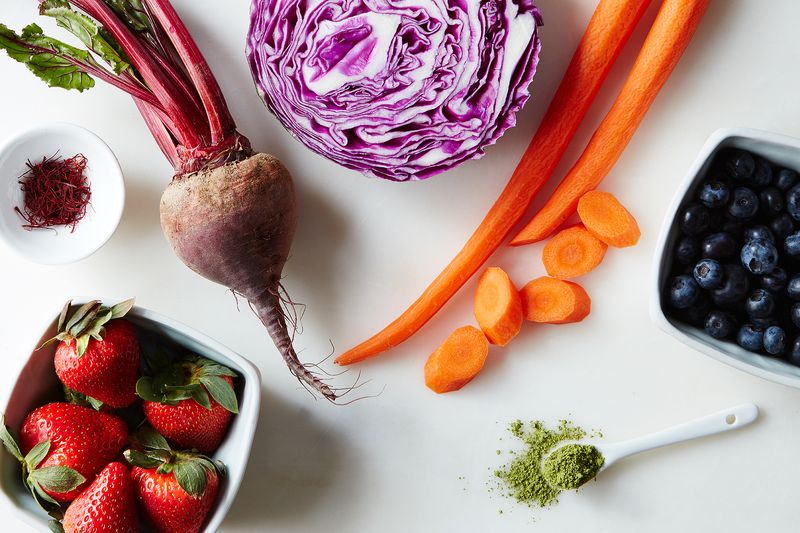
Conclusion:
The future of natural food colorants or organic food coloring in the food industry holds great promise, driven by consumer preferences for natural and health-conscious food products. Given the flourishing market and health concerns, the demand for gluten-free food coloring and organic food coloring is growing. In summary, the outlook for natural food colorants in the food industry is promising, with ongoing research and development to elevate their stability, functionality, and safety within food products.
YANGGEBIOTECH manufacturer Natural Food Coloring Powder: beta-carotene, blue spirulina powder,copper chlorophyll sodium salt, butterfly pea pollen source plant roots, stems, leaves, flowers, fruits, used in products, beverages, wine, cakes, candy, medicine, etc. we offer free samples 10 -30g, to add this branded ingredient to your final product, please email: info@yanggebiotech.com
Send Inquiry
Related Industry Knowledge
- What is Resveratrol and Why it is Important?
- Uses and Benefits of Organic Sunflower Lecithin
- Better Skin with Bioactive Collagen Peptides
- Benefits of Sea Moss and Bladderwrack Together
- Creatine Monohydrate Powder: Best Protein Nutrition
- What is green coffee powder used for?
- black carrot powder benefits for skin
- is sunflower lecithin healthy?
- How to use almond protein powder?
- Benefits and Uses of Natural Food Coloring




